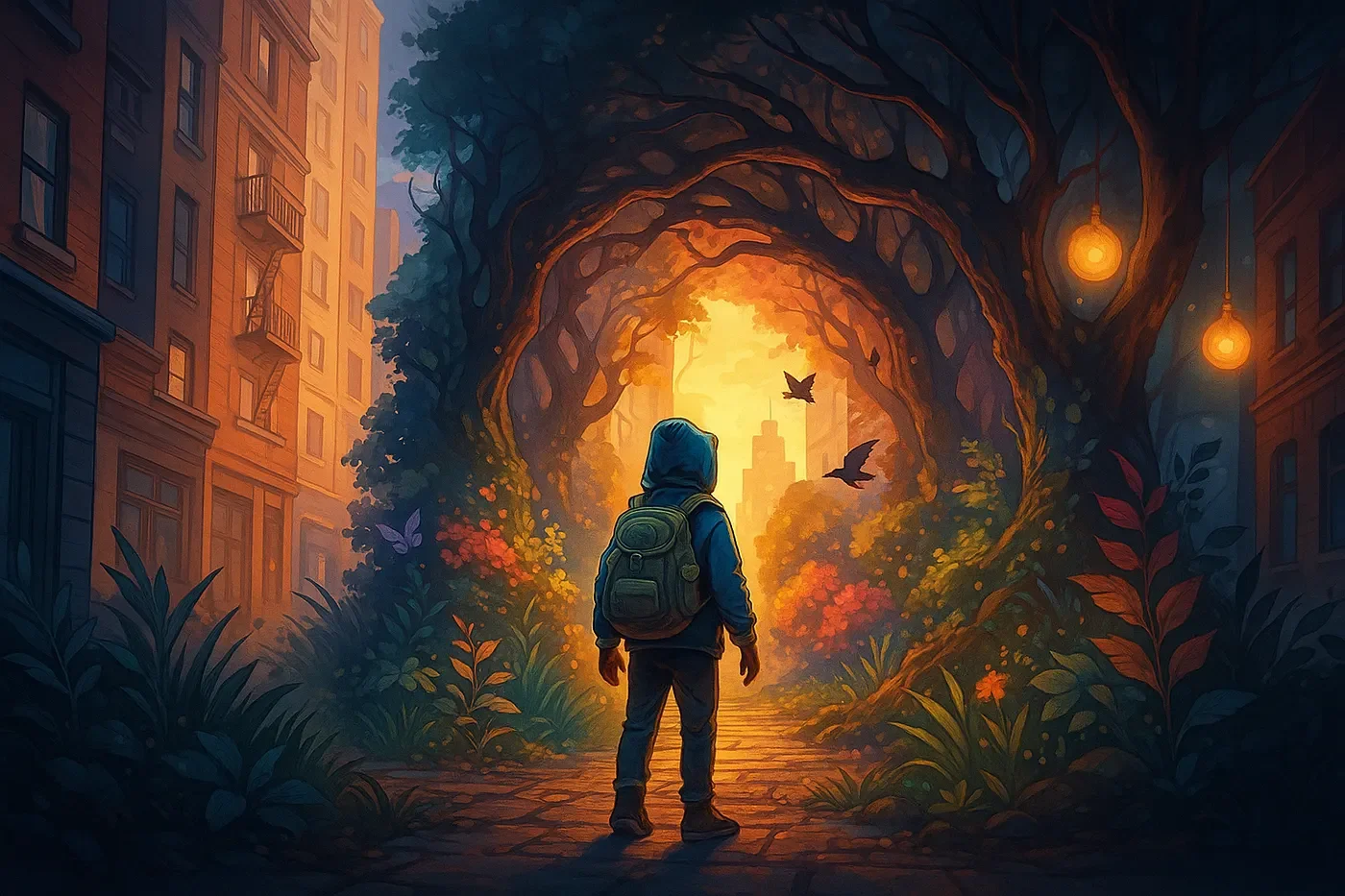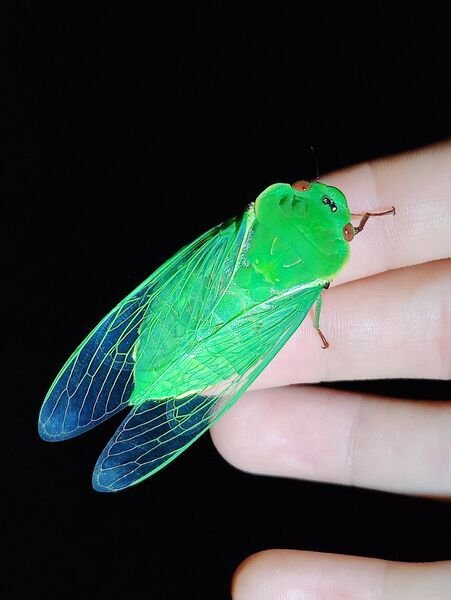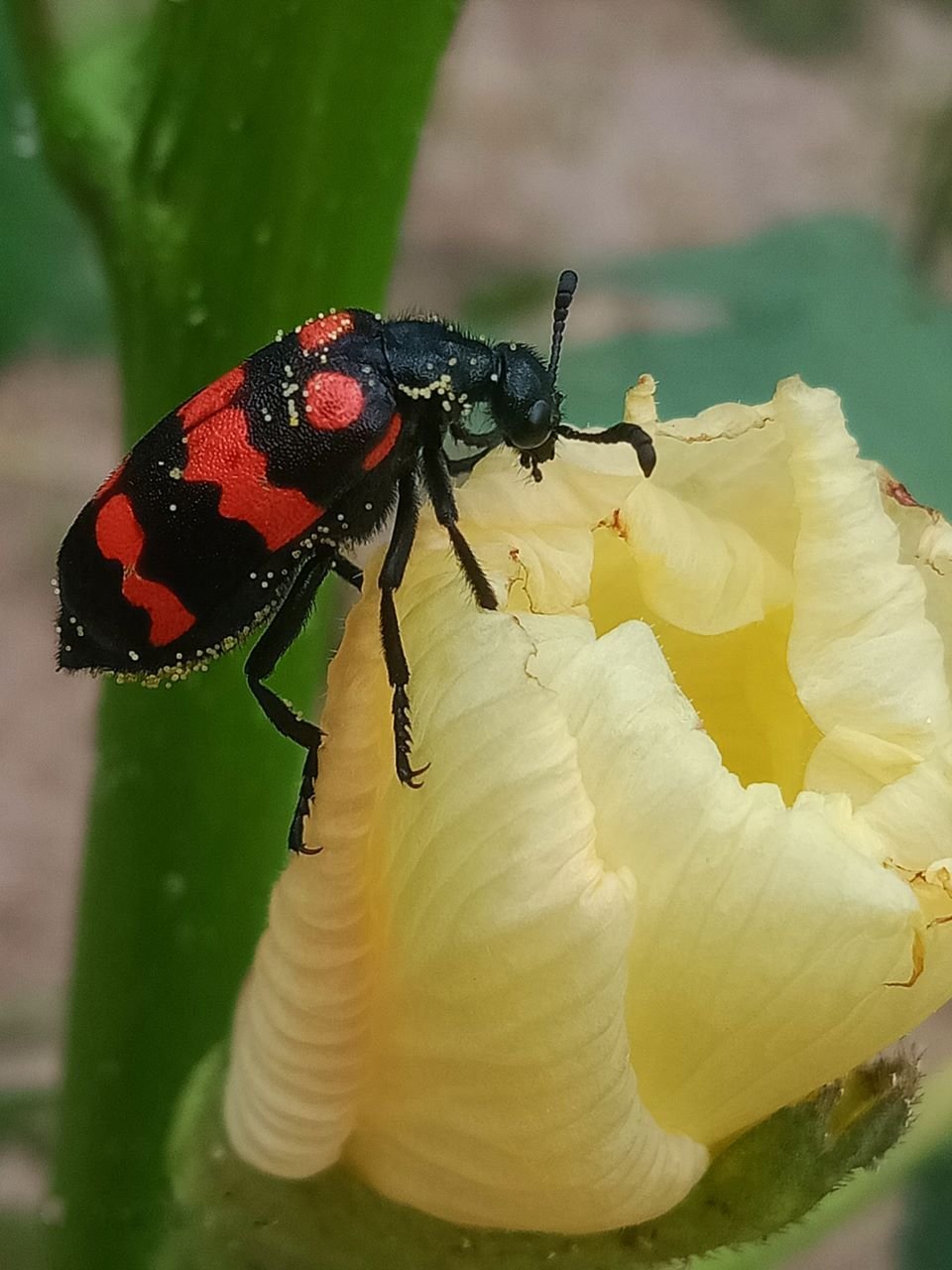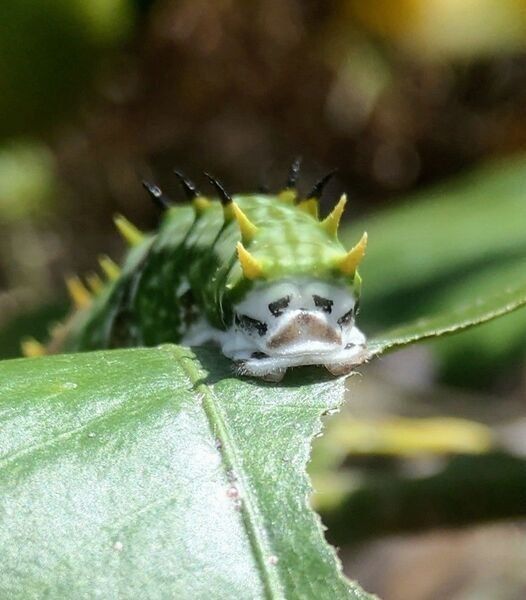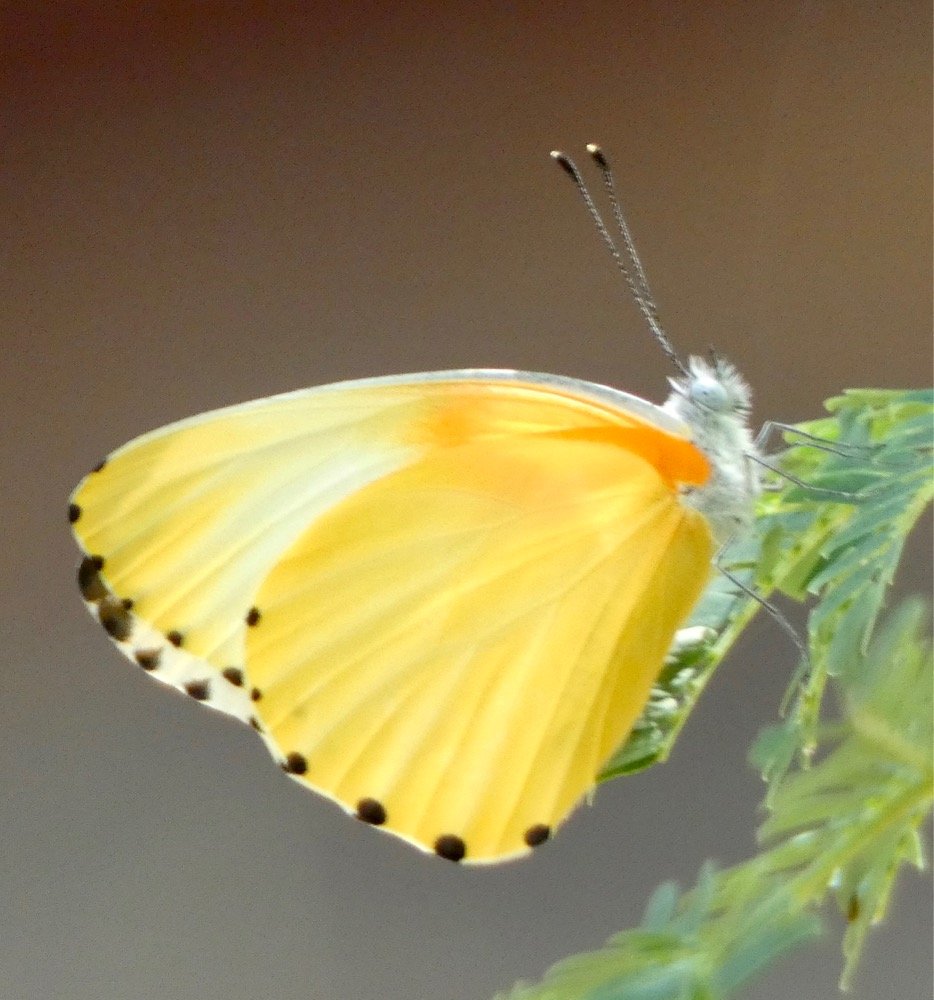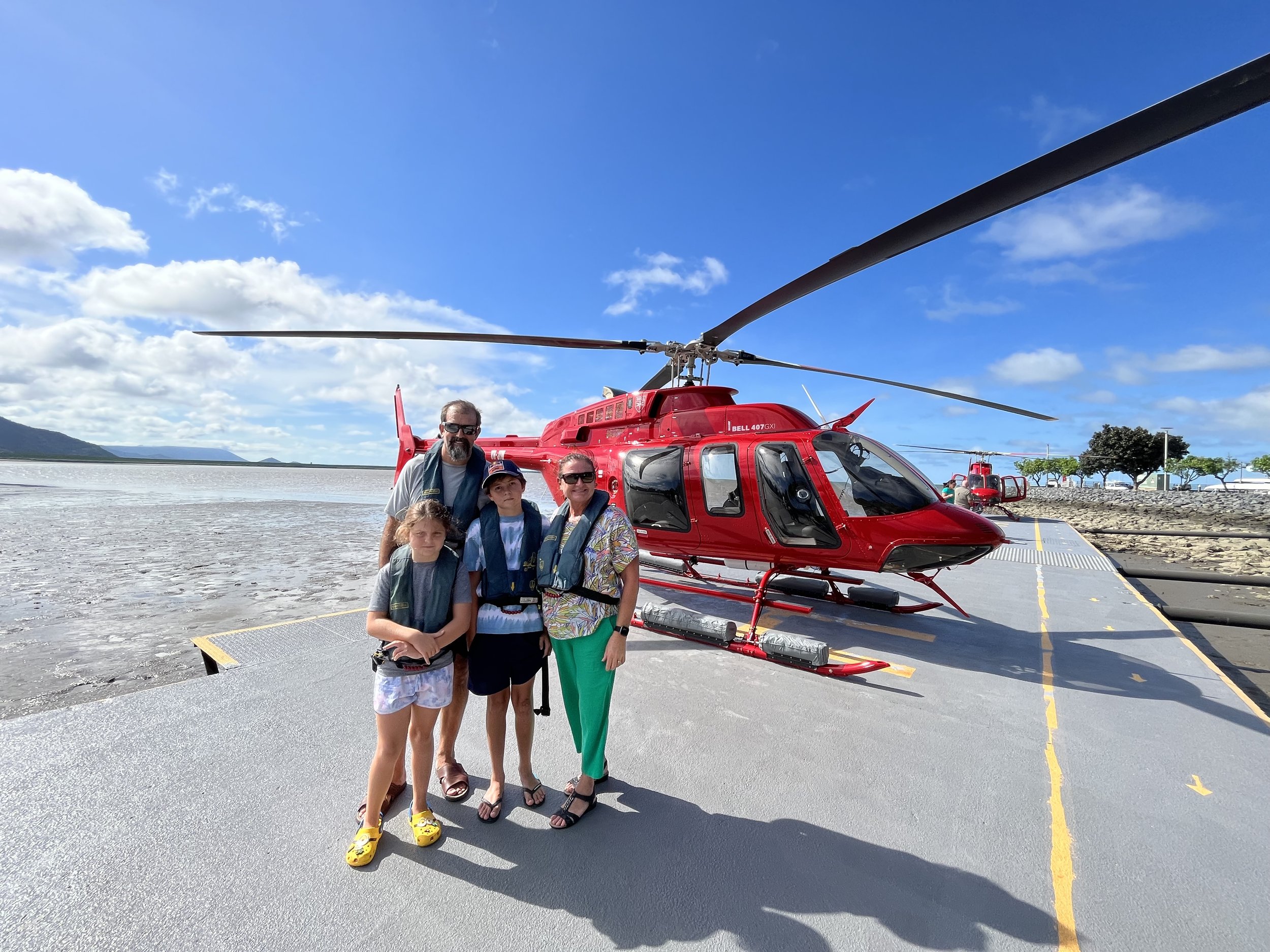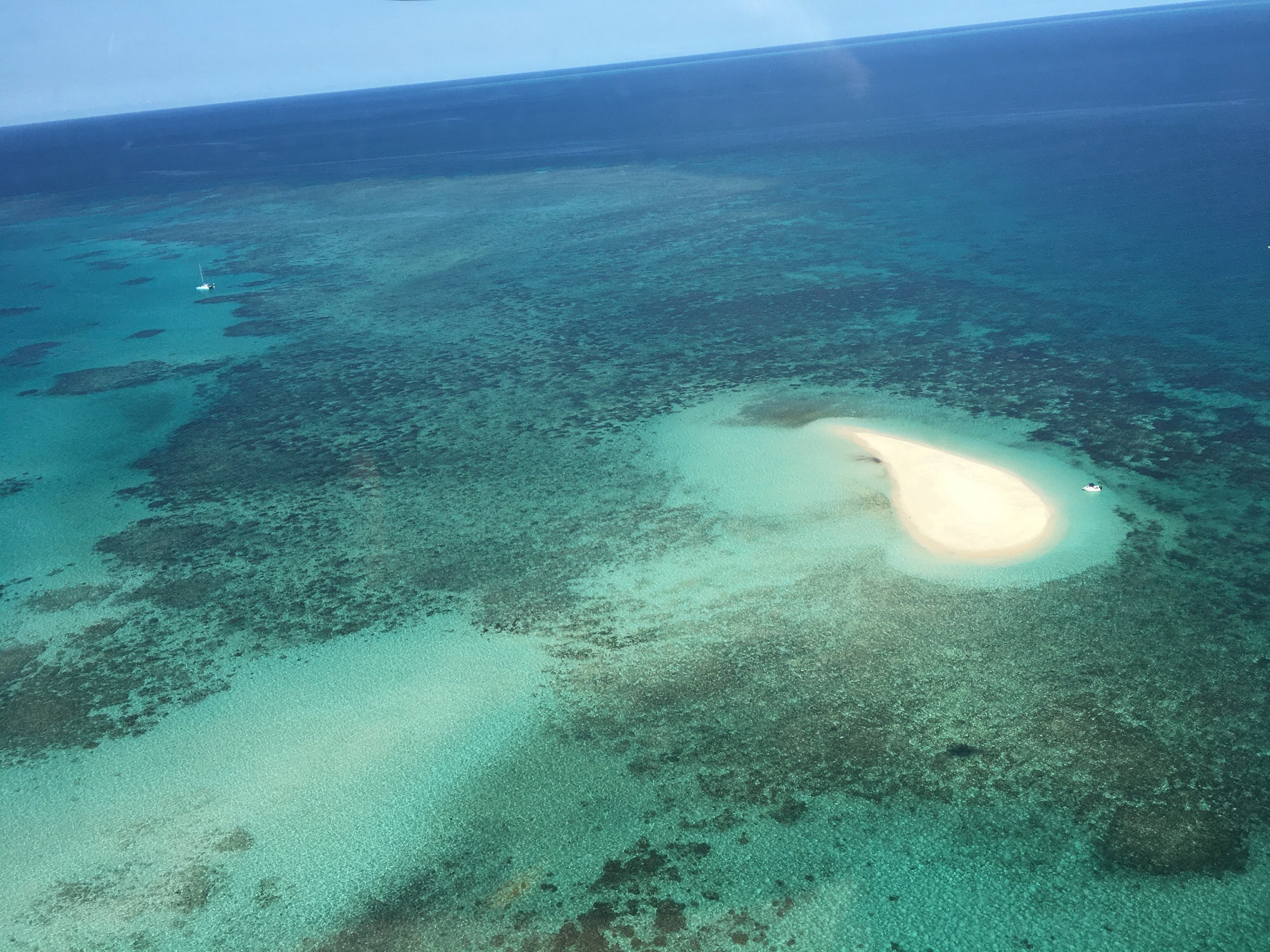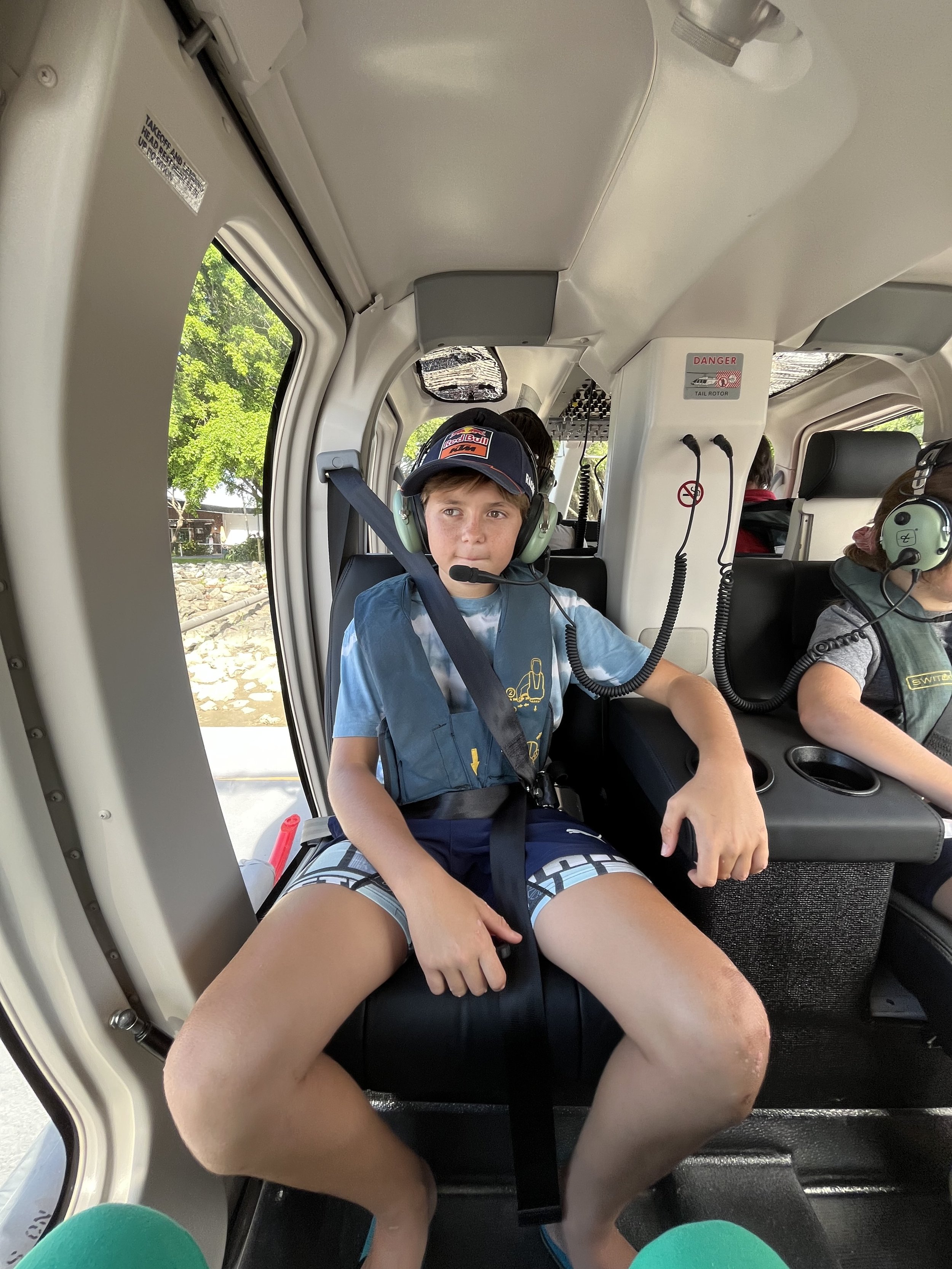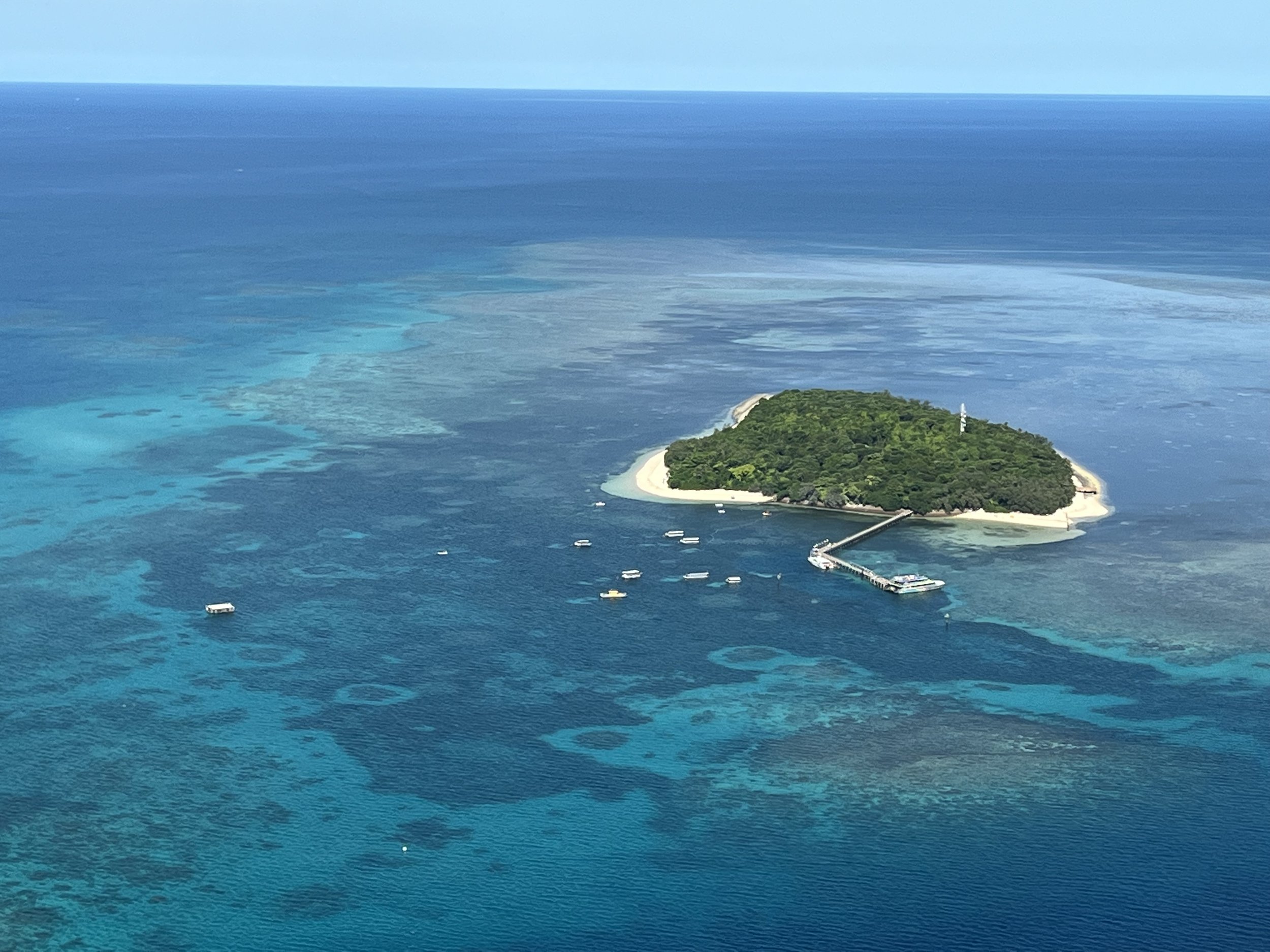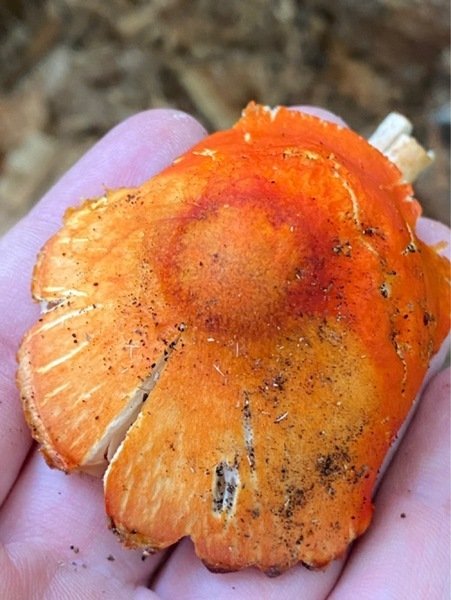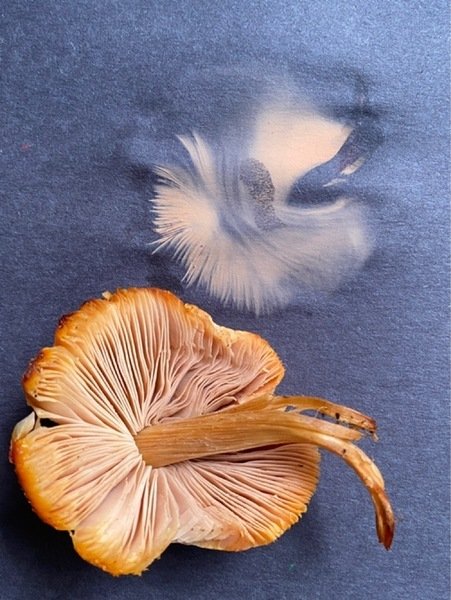Pest Invaders competition by QuestaGame: learn, play, have fun and help protect your local environment.
The Pest Invaders competition for schools by QuestaGame is a fun and educational way to learn about the world of insects and their impact on our environment. Learn about the fascinating lives of bugs and help track down invasive species in your area.
Join the competition and become a part of a unique community that shares your passion for nature!
The competition is organised in collaboration with the Queensland Department of Agriculture and Fisheries.
Why insects are essential to our ecosystem:
Biodiversity - Insects play a vital role in our ecosystems by pollinating plants and flowers, which helps to maintain biodiversity. Without insects, many plant species and animals would not survive.
Natural pest control - Insects also act as natural pest control by preying on other insects that can cause damage to crops and other plants. This helps to reduce the need for harmful pesticides.
The invasive species problem
Invasive species are non-native organisms that have been introduced to a particular ecosystem and cause damage to the environment, economy, or human health. Insects like the Asian longhorned beetle and the spotted lanternfly are examples of invasive species that are causing serious damage in the US.
Images, from the left: Cyclochila virens by Quester ‘Lukeenright123’, Hycleus biundulatus by Quester ‘QuantumThili’, Orchard Swallowtail Butterfly Papilio aegeus by Quester ‘Strays’, Mylothris agathina by Quester ‘nhr’.
Citizen scientists play a crucial role in helping to track the spread of invasive species and monitoring human activity's impact on insect populations.
Participation in the competition.
To participate in the Pest Invaders competition, simply download the QuestaGame app and follow the prompts. The game is self-explanatory. Join a school team and start searching for insects in your local area. Every time you find an invasive species, take a photo and submit it to the QG. Your findings will be added to a global database, and you can earn rewards for your efforts.
Rack up the most points by the end of the competition, and you could win some great prizes and earn bragging rights as the Pest Invaders champion!
Pest Invaders 2022 Winner
All images courtesy of the Grant family.
Last year's competition winner, along with their family, received a free helicopter tour of some of the Great Barrier Reef. Congratulations to Blayd on winning the competition and to the sponsors and the Queensland Department of Agriculture and Fishers for organising the prize! The family seemed to have an amazing trip. To quote their email:
Spectacular! Amazing! Breathtaking! Blayd and his family would like to thank everyone involved in the organisation of such a magnificent Questagame prize. Blayd and his family recently experienced a Scenic Helicopter Flight over Green Island, Yarrabah, False Cape, Arlington Reef, and Vlasoff Sand Cay from Cairns. Our family got to see a family of Dugongs, turtles, a pod of dolphins, and the spectacular reef around Green Island. Our family would like to say a huge thank you for this amazing opportunity.
The benefits of participating in the Pest Invaders competition:
Learn about the world of insects. While participating in the competition you can discover new species and expand your knowledge of insect biology and behaviour.
Contribute to scientific research. You not only learn about biodiversity but your findings will be used by researchers to study insect ecosystems and develop conservation strategies.
And finally, get rewards for your efforts. By submitting and identifying observations you earn gold, and depending on the current edition you can also win some awesome prizes! But most importantly you help protect our planet.
Pest Invaders 2023 runs between 23 January and 26 June. There is still time to join the fun and compete with school teams worldwide. For more information visit https://www.pestinvaders.org/ or contact Gosia at gosia@earthgaurdians.life
Over 30 thousand citizen scientists make history in Great North American Fungi Quest
Users of 6 different citizen science apps submitted almost 150 thousand observations during the largest fungi bioblitz in North America, thanks to the BioSMART technology.
The BioSMART aggregation platform allows reporting from multiple apps. The technology, initiated by EarthGuardians.LIFE, provides event organisers and conservation projects worldwide with the ability to access data from a wide range of citizen science apps without the administrative overhead of sourcing and blending various datasets.
The first edition of the Great North American Fungi Quest took place between 15 September and 15 October this year. The Fungi Quest participants had to photograph and upload their observations to one of the participating citizen science apps: QuestaGame, Mushroom Observer, iNaturalist, CitSci, NatureMaps, and Observation.org.
For full results visit: https://www.biosmart.life/north-america-fungi-quest-2022
The event, designed to develop a better understanding of mushrooms and friends (molds, yeasts, toadstools and more) across all 23 countries of North America was initiated by ThinkFungi in collaboration with Earth Guardians, who provided technological support.
Aggregating results from multiple apps increases involvement and produces even more biodiversity data. By combining the activities of various citizen science apps, organisers aimed to encourage greater inclusion and the best possible results for science.
The initial goal to reach 50 000 sightings was achieved on day 8, far surpassing expectations. On the last day, the organisers recorded 148,214 observations, achieving 3 times the number of observations that were initially anticipated. Someone may ask - why do we need all this data?
“By encouraging people to get out, take photos and upload their observations, we can map as many species as possible in as many regions as possible”, says Robert Courteau, founder of ThinkFungi.org. “There’s an extremely important reason to do this. To be listed as a threatened or endangered species, the criteria typically includes evidence that observations of the species have been made and documented, and that the species is diminishing. Since fungi are so irregular by nature, it requires a lot of people and time to properly observe and document this data.”
Of course, it’s not just the quantity that counts. The collected data helps real research and fungi conservation, and the QuestaGame players contributed to this outstanding result with some extraordinary finds. The rare ‘Pluteus aurantiorugosus - Flame Shield’ was captured in Ontario, Canada by QG player ‘Snailrocks’, who won The Best Find Award for their discovery (see the images below). A great find indeed of this endangered species, threatened mainly by habitat destruction.
“A similar challenge was held in the United Kingdom by the British Mycological Society (BMS)”, says Courteau. “One lucky participant observed a mushroom that the BMS had thought, for the last 50 years, to be extinct on the islands. That’s an amazing discovery!”
The participants were incentivised not only by the possibility of finding a rare species - 6 partners (Guardians of Earth, FreshCap, Grow Mushrooms Canada, Swallow Tail, North Spore and Mushroom Mountain) provided prizes for the participants.
The Great North American Fungi Quest will be back next year, with more apps and more participants. Keep an eye on QG and ThinkFungi socials for more info coming in early 2023.
If you are interested in getting a more detailed recap of the event, visit the ThinkFungi website below: https://thinkfungi.org/fungiquest-2022recap/
See the QuestaGame results at https://questagame.com/north-american-fungi-quest and for more info head over to https://thinkfungi.org/fungiquest/ or contact gosia@earthguardians.life.
Gamers Taking Part in North America’s Largest Ever Fungi Bioblitz for Science
Players of a popular nature conservation gaming app, QuestaGame, will participate in the largest-ever Fungi Bioblitz this September 15 to October 15th.
September 15 2022
QuestaGame is a mobile app on iOS and Android that gets players outdoors to discover, map and ultimately help protect life on Earth. As part of the game, players take a photo of a wild organism, submit it, and the app will return an expert identification, along with the score.
The wildlife data it collects, meanwhile, is shared with national and global biodiversity databases for scientific research and conservation. While QuestaGame is less known in the American market, it’s played around the world and is especially popular among school kids and their families.
“It’s a bit like Pokemon GO meets David Attenborough,” says QuestaGame player Dr. Lisa Ryan, who runs an environmental education program.
Starting September 15th, QuestaGame players in North America will turn their attention from plants and animals to fungi, as part of the Great North American Fungi Quest. The Fungi Quest is designed to develop a better understanding of mushrooms, molds, yeasts, toadstools and more across all 23 countries of North America (including Central American and Caribbean countries).
“Our goal is 50,000 observations in one month,” says Robert Courteau, founder of ThinkFungi.org, which has organised the event. “Fungi serve an invaluable role in our ecosystem. They provide humans and a huge variety of insects and animals with top notch nutrition, but that’s just the tip of the iceberg. There’s so much we don’t know.”
Which is what makes the QuestaGame app - and the Fungi Quest - so compelling to students, parents and teachers alike.
“The students love to compete against their teacher, other classes and across the world,” says Todd Rogers, a grade three teacher at Ferny Grove State School.
"The competition has driven the kids to really pay attention to what's around them,” says a parent who plays QuestaGame under the name “Batgrrrl” and whose child plays the app as part of their school curriculum. “Their ability to spot things has blown me away, and they've started referring to a few of the commonly encountered critters by their scientific names."
In fact, according to Courteau, there’s a good chance a sharp-eyed QuestaGamer will spot a mushroom species that’s yet to be scientifically described. “We only know around 150,000 out of an estimated three million species of fungi.”
Finding a scientifically undescribed species is a common occurrence on QuestaGame, happening every 3-4 days. Recently an 11-year-old QuestaGame player became a co-author of a scientific paper for a rare grasshopper he found.
But even if a QuestaGamer doesn’t find a new fungi species, there will be plenty of prizes and kudos to go around for the Fungi Quest.
The app is free to play. If you’re in North America, just download the QuestaGame app and upload your wild fungi photos during the competition period. They will automatically count toward the quest.
What’s more, QuestaGame players will be able to export their collection to a new game, Guardians of Earth, scheduled to come out early next year. For more information, visit GuardiansofEarth.io.
—————————————-
For more info, head over to https://questagame.com/north-american-fungi-quest or https://thinkfungi.org/fungiquest/, or contact gosia@earthguardians.life
Great Aussie BioQuest Press Release - 2022
For immediate release
Will Brisbane Overthrow Carnamah in this Year’s Great Aussie BioQuest?
7 July, 2022, Sydney, Australia
Although leading the pack after the first round of competition, Brisbane will have their work cut out for them if they hope to win this year’s sixth annual Great Aussie BioQuest.
The Great Aussie BioQuest is a citizen science competition where participants use their mobile phones to upload photos of insects, birds, spiders, reptiles, mushrooms - basically any wild plant or animal they can find — as they compete to help map their local biodiversity for scientific research and conservation.
In previous years, the BioQuest was a state-vs-state competition held during National Science Week in August. But last year, with over 500 councils participating, the BioQuest became a nationwide council-vs-council competition. The event was also extended throughout August, with Carnamah in Western Australia taking the title in 2021 (followed by Katherine and Coorow).
This year, for the first time, the BioQuest is held across two rounds: April and August. Brisbane scored highest in the April round, followed by Kangaroo Island and the Sunshine Coast. But August, which is expected to be the most active month ever, will likely see even higher scores. “Pretty much any council can win the title this year,” says Andrew Robinson, Chair of the Australia-based Earth Guardians, which runs the BioQuest each year. “My money’s on places like Indigo, Cassowary Coast, Port Adelaide, the Shire of Wandering. In January, for example, the remote shire of Nannup was beating everyone. Fact is, there are amazing nature observers across the country, busy tracking the local wildlife in places you’d never expect.”
Using the free QuestaGame mobile app, players receive an expert identification, along with a score, for every sighting they submit. Players can also earn bonus points for identifying the sightings themselves. The sightings data is shared with the Atlas of Living Australia and the Global Biodiversity Information Facility, where researchers use it to get a better picture of Australia’s biodiversity.
“A lot of people think a place like Brisbane, a big city with more biodiversity, will naturally score higher,” says Robinson. “But the scoring system is normalised by population, and scaled according to the ‘scientific value’ of each find, so regional areas with less biodiversity and lower populations will often score higher per submission.”
“Even a small backyard will have a multitude of small invertebrates - insects, spiders, etc - for you to photograph,” explains Dr. Penelope Mills of the University of Queensland. “No backyard? No worries. Lights will attract moths and other nocturnal invertebrates at night.”
QuestaGame has generated over 3.5 million species submissions and expert identifications, and the data have been cited in over 700 scientific papers. Players regularly find species yet to be described by Western Science, or which represent potential biosecurity threats. There are even cases of school kids co-authoring scientific papers based on what they discover playing QuestaGame.
Councils with schools that have begun adopting QuestaGame as part of their education curriculum are also expected to do well this year. Many schools will be participating in a P-12 BioQuest competition that runs in August as well (see QuestaSchools.com). Their activity will also count toward their council’s score in the Great Aussie BioQuest.
“Places like Coffs Harbour, regional areas around Perth, and the Cairns Regional Council have some fantastic school programs,” says Robinson. “Those kids could end up propelling their council to victory.”
Round two runs 1-31 August, including National Science Week. It is free to play. No registration is necessary. Just start playing the app and the points you accrue will count toward your council’s BioQuest score.
Caring for Possums - Tips from QuestaGame player Evie (age 8)
Last week we received a wonderful e-book from a QuestaGame player named Evie, who writes:
”Hi my name is Evie. I’m 8. I love nature and playing QuestaGame! My family is signing up for wildlife caring soon so I made this book about possums. I hope you like it.”
You can download the book here.
If you have some nature adventure stories to share, contact us at info@questagame.com.
Some top finds of 2020! What will you find in 2021?
Wishing you a very Happy New Year!
As we enter 2021, we’re delighted to report
2.8M observations, data which have been downloaded over
300M times for scientific research and conservation, and cited in
213 scientific publications.
Plus exciting new partnerships, upgrades and even some new products coming together in 2021.
Some top finds and identifications from 2020:
Ground parrot (Pezoporus wallicus)
Spotted by: cwpaine
Location: Queensland, Australia
Field notes:
IDers: Amphibiaphiles; floozy; Greg McCroary; Corinne; MaskedLapwing; David
“Thank you for sharing the beautiful ground parrot!” - Amphibiaphiles
“Amazing find” - David
Large Pink and Green Hawkmoth (Callambulyx rubricosa)
Spotted by: Pema Thinley
Location: Near Diothang, Bhutan
Field notes: green with red spot moth. Big, about 8-10cm wing span
IDers: cwpaine; Corinne; David
“Beautiful!” - cwpaine
Perth Pachysaga (Pachysaga australis)
Spotted by: Midge
Location: Near Perth, Australia
Field Notes: There appears to be limited photos and knowledge of this particular species. The diamond pattern on its back helped identify it.
IDers: DavidKnowles; wwlearn
“I am surprised I did not see P. australis in my Bullsbrook NR samples. Recently saw a number in the Wireless Hill Survey a few weeks ago. 5 stars.” - DavidKnowles
Green pit viper (Trimeresurus trigonocephalus)
Spotted by: KeshanPerera
Location: Near Kandy, Sri Lanka
IDers: cwpaine; SARANGAKONARA; Heshan
”Distinct green color with black markings.Large triangular head.Presence of a distinct pit between eye and the nostril.” - SARANGAKONARA
”This is a mildly venomous snake which is endemic to Sri Lanka. They are distributed in the wet zone of Sri Lanka. They have Solenoglyphous fangs.” - Heshan
Spotted Stingaree (Urolophus gigas)
Spotted by: Animal
Location: Near Bunbury, WA, Australia
Field notes: Found in 12m in a rocky reef, approx 1/2 to 3/4m long. Grey with pale grey/whiteish rings in a seemingly erratic pattern, tail with a barb.
IDers: Greg McCroary; Andrew
”Only 18 pervious sightings recorded on the ALA!” - Greg McCroary
”Wonderful to see!” - Andrew
Tuft-bearing Longhorn Beetle (Aristobia approximator)
Spotted by: Phouvieng
Location: Vientiane, Laos
Field notes: My friend (Anong) photographed this beetle at her garden in Vientiane.
IDers: octonaughts; wwlearn
”Fatastic spotting!” - wwlearn
Hollandaea porphyrocarpa
Spotted by: Batgrrrrl
Location: Daintree, Australia
Field notes: Bright pink Cauliflorous flower approx 15cm diameter. Protruded from the small tree about 15cm long.
IDers: Stuart Worboys; The Owl Whisperer
“Nice photos of an extremely rare plant.” - Stuart Worboys
Slug caterpillar moth (Limacodidae)
Spotted by: Govardhan ch
Location: Near Warangal, India
IDers: wwlearn; dravinder; suchand
Jumping Spider (Salticidae sp.)
Spotted by: nomadcam
Location: near Melbourne
Field notes: this small robust looking spider was approx 8mm in length. it was found sheltering in the stem of a Goodenia sp. bush.
IDers: Robert Whyte; Andrew
“It’s a Saitis/Servaea/Maratus relative but I haven’t seen it previously. It wins 5 stars each on all the scoring [photos, field notes, remarkability].” - Robert Whyte
Oceanic Comb Jelly (Ocyropsis sp.)
Spotted by: Helenergy_4
Location: Busselton, WA, Australia
Field notes: NEVER seen this species before!!! Saw three of them.
IDers: Richard Willan; wwlearn
“You have done exceptionally well to find and photograph this rare, oceanic comb jelly.” - Richard Willan
Happy adventuring in 2021!
The 2020 Global BioQuests Results
Here are the results of the 2020 Global BioQuests.
Certificates and announcements regarding the awards will be sent out very soon.
A few winners are yet to be declared because they are too close to call. We are reviewing the scores and will post the full results here.
Congratulations to all the winners and to everyone involved!
World BioQuest Winners
Champion Spotters Team
Winner: Great Southern Land
2nd place - Nature Finders
3rd place - Thiaki Creek
Champion Identifiers Team
Winner: Great Southern Land
2nd place - Nature Finders
3rd place - NRM Education
Champion Identifier
Winner: Greggo (Nature Finders)
2nd place - SuChanRuss (Nature Finders)
3rd place - cwpaine (Great Southern Land)
Novice Champion Identifier (New Players)
Winner: Legendary Apple (TheBestAdventurers)
1st place - Cladonia (Cubberla-Witton Catchments Network )
2nd place - Seniorsonny (TheBestAdventurers)
Champion Spotter
Winner: cwpaine (Great Southern Land)
2nd place - floozy (Great Southern Land)
3rd place - ChelonaJill (Nature Finders)
Novice Champion Spotter (New Players)
Winner: Luke Preece (Thiaki Creek)
2nd place - Kortcrew (Nature Namers)
3rd place - Thiaki Creek (Thiaki Creek)
Best Find:
Winner: JanR (Great Southern Land) for spotting Killer Whales
Most Valuable Player
Winner: Cladonia (Cubberla-Witton Catchments Network )
Total points earned for sightings and IDs divided by number of sightings. Min 4 sightings required.
Global P-12 Schools BioQuest Winners
Champion Spotters Team
Winner: Renmark North Primary School
2nd place - Thiaki Creek
3rd place - Presidio Knolls School
Champion Identifiers Team
Winner: Bundanoon Public School
2nd place - Renmark North Primary School
3rd place - Thiaki Creek
Champion Spotter
Winner: alissa (Renmark North Primary School)
2nd place - Luke Preece (Thiaki Creek)
3rd place - Thiaki Creek (Thiaki Creek)
Champion Identifier
Winner: Albaaadventurer (Broulee Public School)
2nd place - alissa (Renmark North Primary School)
3rd place - Olaoshi (Presidio Knolls School)
Most Valuable Player
Winner: QuestaQueen (West Moreton Anglican College)
Total points earned for sightings and IDs divided by number of sightings. Min 4 sightings required.
Best Find
Winner: BassoFam for a Cedar Waxwing (Camino Pablo Elementary)
Global University BioQuest Winners
Champion Spotters Team
Winner: University of Peradeniya
2nd place - University of Sydney - Team 1
3rd place - University of Queensland - Goddard Dungeons
Champion Identifiers Team
Winner: University of Peradeniya
2nd place - University of Sydney - Team 1
3rd place - The University of Queensland-BIOL3209-2020
Champion Identifier
Winner: Heshan (University of Peradeniya)
2nd place - Tharindu dilshan(bogzzi)
(University of Peradeniya)
3rd place - Supipi (University of Peradeniya)
Champion Spotter
Winner: Supipi (University of Peradeniya).
2nd place - Heshan (University of Peradeniya)
3rd place - Tharindu dilshan(bogzzi) (University of Peradeniya)
Best Find
Winner: Eutropis sp. spotted by Uvin Thavisha
Most Valuable Player
Winner: Stephanie (University of Sydney - Team 1)
Total points earned for sightings and IDs divided by number of sightings. Min 4 sightings required.
Overall Winners
Champion Spotters Team
Winner: University of Peradeniya
2nd place - Great Southern Land
3rd place - Nature Finders
Champion Identifiers Team
Winner: Great Southern Land
2nd place - University of Peradeniya
3rd place - Nature Finders
Champion Identifier
Winner: octonaughts (University of Adelaide - Team 8)
2nd place - Greggo (Nature Finders)
3rd place - cwpaine (Great Southern Land)
Novice Champion Identifier (New Players)
Winner: Stephanie (University of Sydney - Team 1)
2nd place - RebeccaCross
(University of Sydney - Team 2)
3rd place - phow8485 (University of Sydney - Team 1)
Champion Spotter
Winner: cwpaine (Great Southern Land)
2nd place - Supipi (University of Peradeniya)
3rd place - Heshan (University of Peradeniya)
Novice Champion Spotter (New Players)
Winner: SARANGAKONARA (University of Peradeniya)
2nd place - Aaron (University of Sydney - Team 2)
3rd place - KushiniK (University of Peradeniya)
Best Find
Winner: Eutropis sp. spotted by Uvin Thavisha, University of Peradeniya (runner up to cwpaine who spotted an Emydura krefftii).
Most Valuable Player
Winner: Sog (University of Queensland - Goddard Dungeons)
Total points earned for sightings and IDs divided by number of sightings. Min 4 sightings required.

